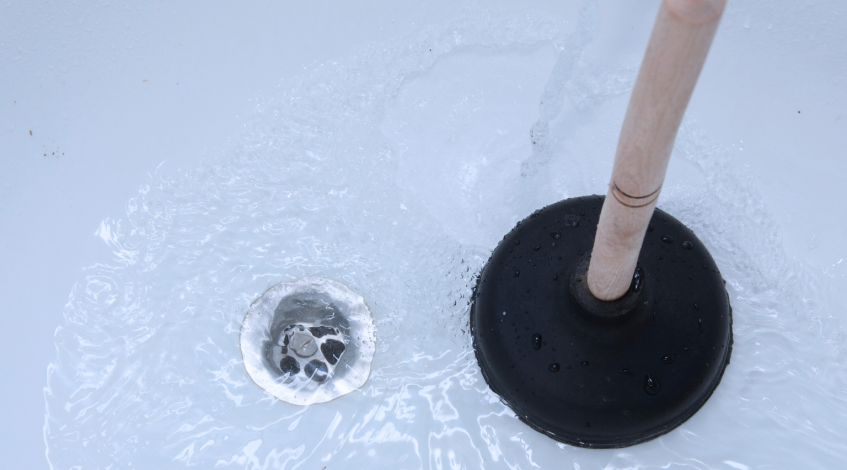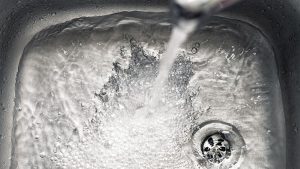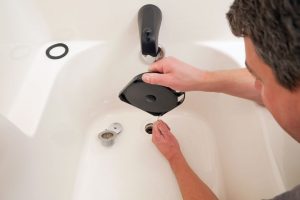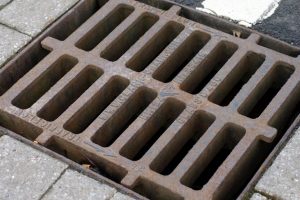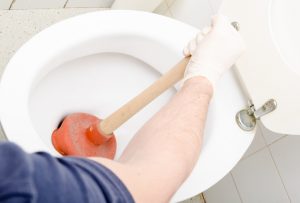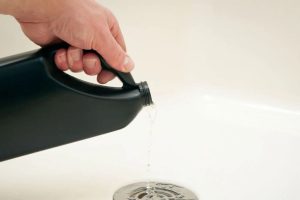Most people assume a blocked bath drain needs expensive tools or a plumber’s visit. But in reality, many of these clogs can be cleared with household items—if you know what to look for and act fast.
Shower drains are among the top five most common plumbing problems. And in most cases, they’re caused by the same culprits, hair, soap scum, and poor drainage habits.
This guide breaks down simple, plumber-approved ways to solve the issue before it gets worse.
Knowing how to fix a blocked bath or shower drain can save you from costly repairs, water damage, and even health risks from stagnant water.
Key Takeaways:
- Ammonia can slowly corrode certain metals. If mixed with bleach, it can release toxic fumes and may damage your plumbing.
- Try using a straightened coat hanger to fish out grime stuck inside the pipe.
- If the clog sits deeper in the pipework, a plumber may need a high-pressure water jetter.
Estimated Costs for Common DIY Tools:
| Tools | Estimated Price |
| Plunger | $10–$20 |
| Drain snake / handheld auger | $15–$30 |
| Drain claw or Zip-It tool: | $5–$10 |
| Gloves and basic cleaning supplies | $5–$15 |
| Baking soda and vinegar (natural solution) | $2–$5 |
Get Your Plunger
A plunger works by creating suction and pressure to dislodge whatever’s blocking the drain. It is usually a mix of hair, soap scum, or debris caught just below the surface. It’s useful for minor clogs that haven’t made their way too deep into the pipes yet.
- Seal the overflow opening.
- Add enough water to cover the plunger.
- Place the plunger over the drain.
- Push down and pull up with force (around 10–15 plunges)
- Lift the plunger and see if the water starts draining
Use a Coat Hanger
If you don’t have a proper drain snake, a wire coat hanger works as a handy substitute for fishing out clumps of hair and other debris that’s just out of reach.
- Straighten the hanger. Leave a small hook at one end. This will be your “grabber.”
- Remove the drain cover. Make sure you can access the drain opening fully.
- Insert the hooked end. Gently push it down the drain and twist slowly to snag hair and grime.
- Pull it out carefully. You’ll likely bring up some gross stuff. Dispose of it and repeat a few times.
- Flush with hot water. Run water down the drain to check if it flows freely.
Tip: Don’t push too hard or deep. Coat hangers aren’t flexible like drain snakes, and forcing them could damage the pipe.
Use a Drain Snake
Reach for a drain snake when water in your bath, sink, or shower is backing up or draining slowly—especially if the blockage is deeper in the pipe, around 5 to 8 metres in.
Check our guides on how to properly use a drain snake.
Unlike plungers or chemical cleaners, a drain snake grabs onto soft clogs and pulls them out. Avoid running water before using a drain snake. While it can still work in wet pipes, you’ll get better results if the drain is as dry and empty as possible.
Once a clog goes beyond 8 metres, your drain snake won’t do the job, and a plumber will need to take over.
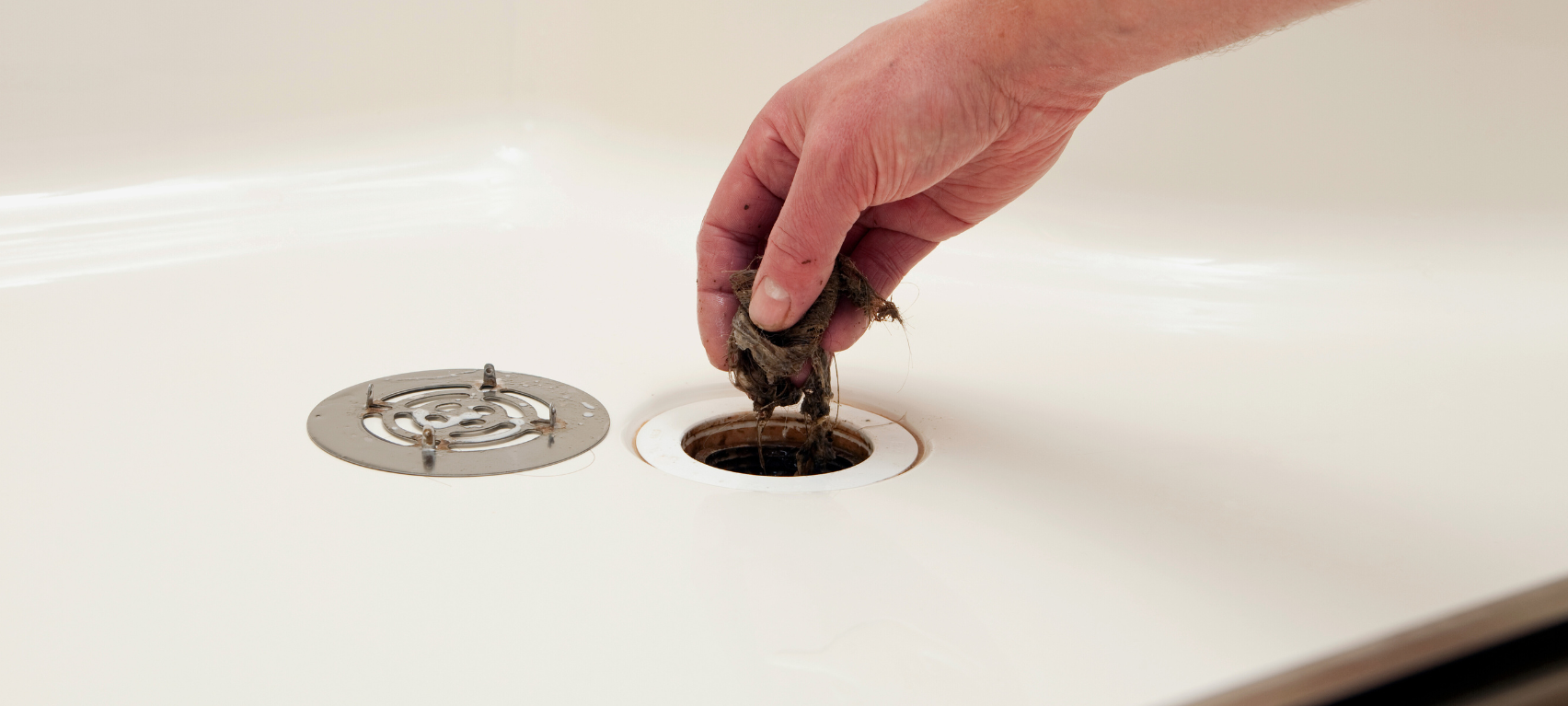
Use Draining Chemicals
If physically yanking out or breaking up that blockage didn’t work, it’s time to get stuck into the chemicals. First, try the natural drain cleaner route – a powerful blend comprised simply of the baking soda and vinegar that’s already in the pantry. The fizzy concoction is very effective, and follow up the brew with a full kettle of boiling water.
Note that most plumbers recommend against their use as they can cause damage to your pipes, not to mention the environment.
A Reddit discussion shared several chemical solutions for unblocking a bath drain. Two users offered their personal suggestions:
jwalkrufus:
“Liquid Drano. I dump in an entire bottle and let it sit for a few hours before rinsing it down—no problem. I do this about once a year when my drain slows down or clogs, mostly from hair, I’m guessing.”
kempff:
“Since the suspect is hair + soapscum, start with the traditional lye-based drain openers and be patient. Just use the traditional products, not the foaming stuff.
If two applications of a whole bottle each over the course of a couple days doesn’t do the trick, go for the sulfuric acid but don’t leave it in too long.
Then go buy one of those rubber sombrero hair traps that actually works.”
And after that, get one of those rubber sombrero-style hair traps, they actually work.”
Let a Verified Local Expert Handle Your Blocked Bath or Shower
If you’re noticing some bubbling from that drain, it’s probably a problem much deeper into your drain and pipes. Call on a trusted local specialist in blocked drains Gold Coast, Sydney, Melbourne, & Newcastle.
Here at Best Plumbers Club, all we do is work with the absolute best local plumbers near you.
We check online review ratings with a legit Level 5 Google local guide. We ensure every plumber we recommend offers all the peace-of-mind perks like 100% guaranteed workmanship.
Ready to conquer that stubbornly-blocked bath or shower drain? Drop us a message here at Best Plumbers Club, and a brilliant plumber will be in touch. It’s that easy.
Frequently Asked Questions
Why does my bath drain keep getting blocked, even after cleaning it?
It sounds like you may have an obstruction beyond the trap. It could be that liquid drain cleaners aren’t very effective for this type of blockage. If you can’t run a snake through the trap and past the blockage, you may need to partially disassemble the drain system to reach the problem area.
Drains are designed to work properly. If you’re not comfortable taking apart pipes or using a drain snake, it’s probably time to call in a professional. A plumber can locate cleanout fittings, use more advanced tools, and make any necessary modifications on the spot.
Can chemical drain cleaners damage my pipes or fixtures?
Ammonia, for example, may damage certain types of pipes, especially those made of copper or brass. Ammonia can cause corrosion or deterioration when it reacts with specific metals over time. If mixed with other substances, such as bleach, it can release harmful fumes and increase the risk of damage to plumbing systems.
Some chemical drain cleaners generate heat, which may soften polyvinyl chloride (PVC) pipes commonly found in modern homes. However, such damage is rare when the product is used according to the instructions. Damage is more likely to occur when these cleaners are used on older metal pipes.
How much does it cost to unblock a bath drain professionally?
Simple surface blockages (e.g. hair buildup near the trap) can be cleared for around $150-$200 using manual tools or basic snaking.
Moderate blockages that are deeper in the line or require access through multiple fixtures may cost between $200-$300.
If the blockage is located further down the pipework, a plumber may need to use a high-pressure water jetter, which usually brings the cost up to $300-$400.
Camera inspections, if needed to locate hidden or recurring blockages, generally cost $350 to $450.

